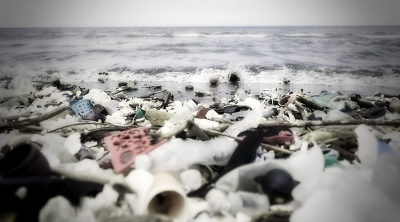
The United Nation Climate Change Conference (or Conference of Parties – COP29) is still making its way at Baku, the Republic of Azerbaijan, as of when this article was written.
Government ministers are negotiating for various options to raise a yearly $1 trillion fund so to aid developing countries to cope with climate change issues.
News has reported that the frustrated environmental activists are protesting at the COP29 conference site.
Obviously, funding is crucial especially for lower income countries in abating climate change.
For medium-income countries like Malaysia, there are options that we may explore.
In the past one year, my team and I have been involved in the Research and Innovation for Development in ASEAN (RIDA) project funded by the Foreign, Commonwealth and Development Office (FCDO) of the United Kingdom.
The project aims to develop a bespoke software which can help energy planners to plan for various options in decarbonising energy generation sectors of a country.
Our team consists of academics from University of Surrey UK (Dr Michael Short), De La Salle University Philippines (Prof Raymond Tan) and myself at the University of Nottingham Malaysia.
On top of software development, our team also hosted three decarbonisation workshops in Kuala Lumpur, Manila and the UK with the project fund.
The workshops were meant to expose industrial practitioners on various techniques on decarbonisation, so that CO2 emissions can be reduced, which in turn helps reduce carbon footprint of their products or processes.
During the decarbonisation workshop held in Kuala Lumpur in March 2024, discussions were made among participants on the reflection of National Energy Transition Roadmap (NETR).
The NETR was launched by the Prime Minister in June 2023, consisting of 10 flagship catalyst projects aiming to reduce greenhouse gas (GHG) intensity against GDP by 45 per cent by year 2030 (as compared to 2005 baseline).
During the workshop, the attendees identified that the use of biomass, carbon capture and storage (CCS), and hydrogen adoption as critical options for reducing emissions in hard-to-abate sectors like power, cement, and steel production.
Note that biomass, CCS and hydrogen are among the flagship catalyst projects identified in the NETR.
Let us examine these few flagship catalyst projects in greater details.
Biomass is considered as carbon neutral renewable energy source, as plants absorb CO2 while it grows and release CO2 back to the atmosphere when it is burned.
The good news is that biomass is found abundantly in Malaysia.
In the oil palm sector, biomass is available in the upstream (plantation) and downstream production (palm refinery and oleochemicals).
If the five policy thrusts and 17 strategies outlined in the National Biomass Action Plan 2030 (launched in 2023) can be materialised, the potential of biomass can be greatly optimised.
Workshop attendees from the oil palm sector believed that it is currently not economical to use palm kernel shell (PKS) for electricity production, as the price of this biomass has raised significantly due to its export to Japan as a renewable energy source in the past decade.
It is unlikely that local power generation operators are willing to purchase PKS in USD so to compete with the Japanese buyers.
Fortunately, apart from PKS, there are still other types of biomass in the oil palm value chain, such as empty fruit bunches (EFBs), mesocarp fibre, oil palm trunk, etc., which has great potential, apart from wood waste, coconut shell and paddy rice husk.
Instead of hoping for greater breakthrough with COP29, small countries like Malaysia should do our best to explore whatever possible options in abating climate change.
With the recent move to rationalise fossil fuel subsidy, it is hope that the Malaysia government will provide better incentive for industrial practitioners on biomass adoption, so that the two important targets of NETR can be achieved, i.e. 70 per cent installed capacity of renewable energy share by 2050, and the complete removal of coal power plants.
With regards to CCS, it is a technology that requires large investment.
In its operation, CCS involves two important stages, that is capturing CO2 from large point sources such as fuel gas from power plants, cement factory, petrochemical complexes, etc.
The captured CO2 then will undergo compression so to reach high pressure before it can be sent for storage in geological reservoirs.
In the case of Malaysia, suitable reservoirs are those depleted natural gas wells found in the offshore area of Malay basin, which are approximately 100 km from the coast of Sarawak.
Hence, it is necessary to compress the CO2 stream to about 100 bar (25 times of our car tyre pressure) before it can be sent for storage.
Doing this certainly involves huge capital and operational costs.
Hence, most CCS projects are found in the European countries for now (a successful one is the Northern Lights in Norway).
In Asia, several CCS projects are reported in Japan and China.
The participants of KL decarbonisation workshop are also looking forward for the progress with the PETRONAS CCS projects at Kasawary platform at Sarawak offshore.
Many are aware that Sarawak government is now pushing for hydrogen energy.
This future energy source is useful in supplying high-temperature heating, fuel for long-range freight transport, among others (which is now predominantly supplied by fossil fuel).
However, probably not many are aware that hydrogen energy is colour-coded, depending on their feedstock and production pathways.
Among them, grey hydrogen is produced from fossil fuels (oil and coal), where greenhouse gases are released during its production.
If CCS is installed in fossil-based hydrogen production facilities, its CO2 emission will be captured, which then makes the grey hydrogen to become blue hydrogen.
On the other hand, if renewable energy source is used for hydrogen production, green hydrogen with zero carbon emission will be produced.
The International Renewable Energy Agency (IRENA) reported that green hydrogen production using electrolysis only contributes about 4 per cent for global production in 2021, while 47 per cent of hydrogen production was produced from natural gas, 27 per cent from coal, 22 per cent from oil as a by-product.
For now, green hydrogen is approximately two times more expensive than blue hydrogen and four times as compared to grey hydrogen.
This is mainly due to the fact that 70 per cent of its cost lies with its renewable energy input.
It is expected that the decrease of renewable energy cost will soon make green hydrogen to be more economically viable.
In the case of Sarawak, its green hydrogen production is made possible thank to its abundant hydropower, which is a low carbon renewable energy source.
If things go according to plan, Sarawak may become green hydrogen exporter to Japan and Korea in a coupon of years, helping to position Malaysia as a major green hydrogen producer upon 2050.
It is worth noting that the National Climate Change Policy 2.0 launched last September (a renewed version based on the first edition in 2009) has reassured the position of biomass, CCS and hydrogen energy in the abatement of climate change of Malaysia.
It is hope that this new policy will drive the country towards reduction of GHG intensity by 45 per cent by 2030, and moving towards the net zero target in 2050.
Rather than hoping for greater breakthrough with COP29, or in any future COP events, small countries like Malaysia should do our best to explore whatever possible options in abating climate change.
It is hoped that pursuing such efforts will help slow down (if not reduce) the risk of having more intense extreme climate incidents (e.g. sudden floods, prolong draught) which we have witnessed their increased frequency in recent years.
(Professor Dominic Foo is Fellow, Academy of Sciences Malaysia, FASc.)
ADVERTISEMENT
ADVERTISEMENT







































